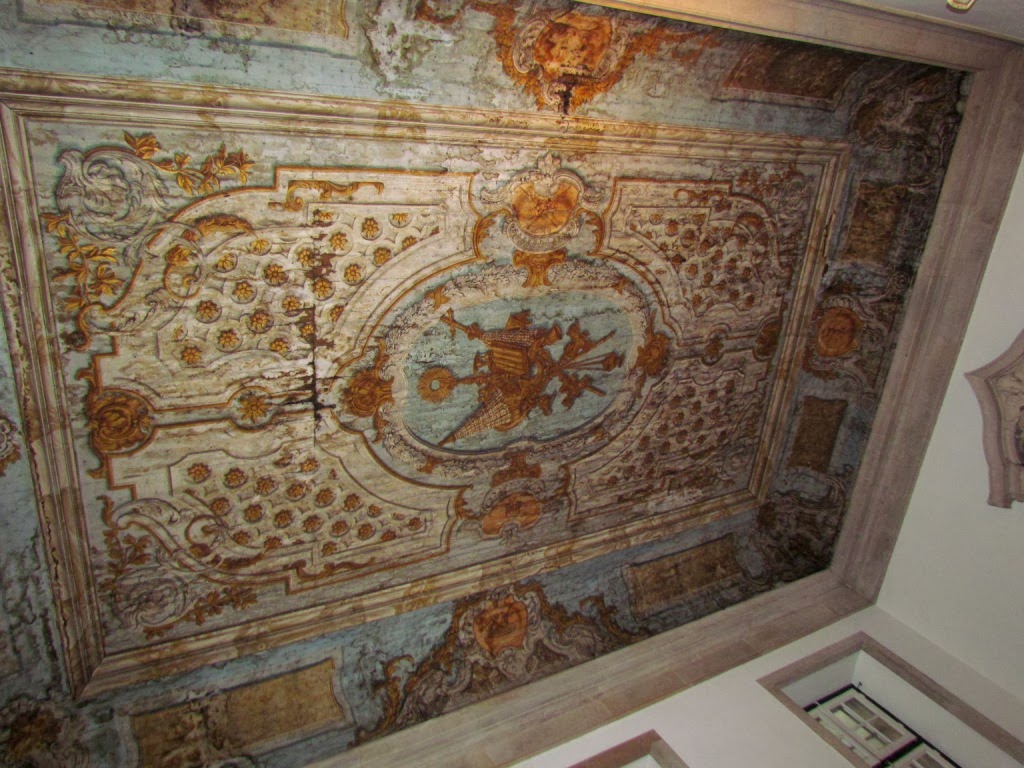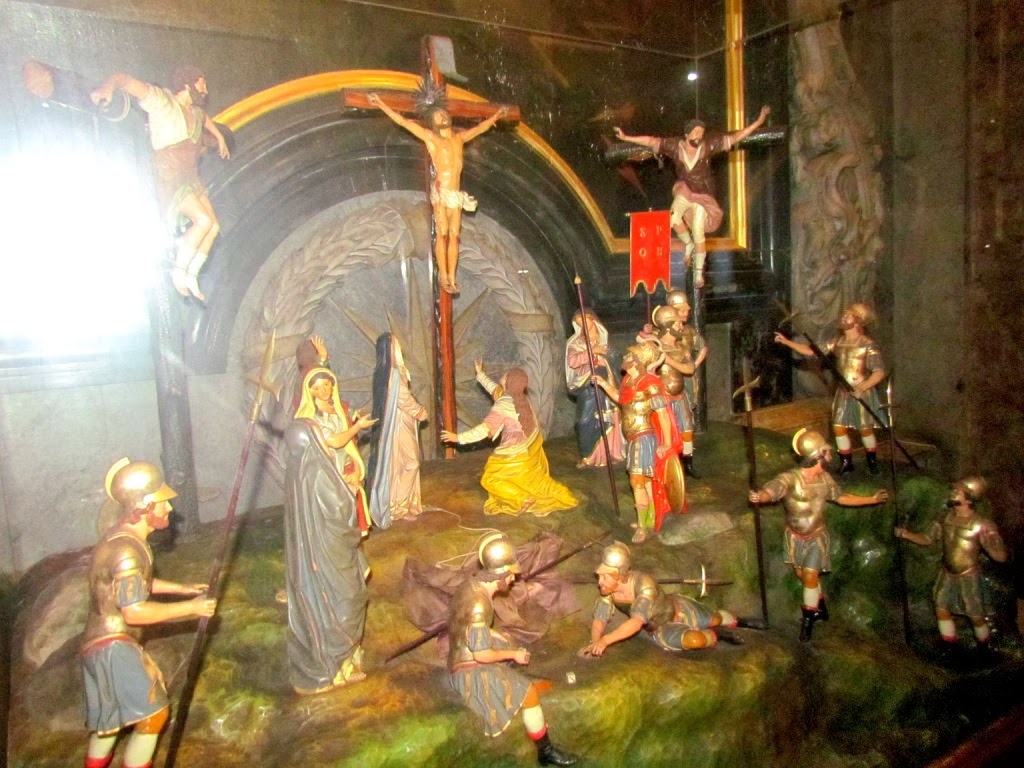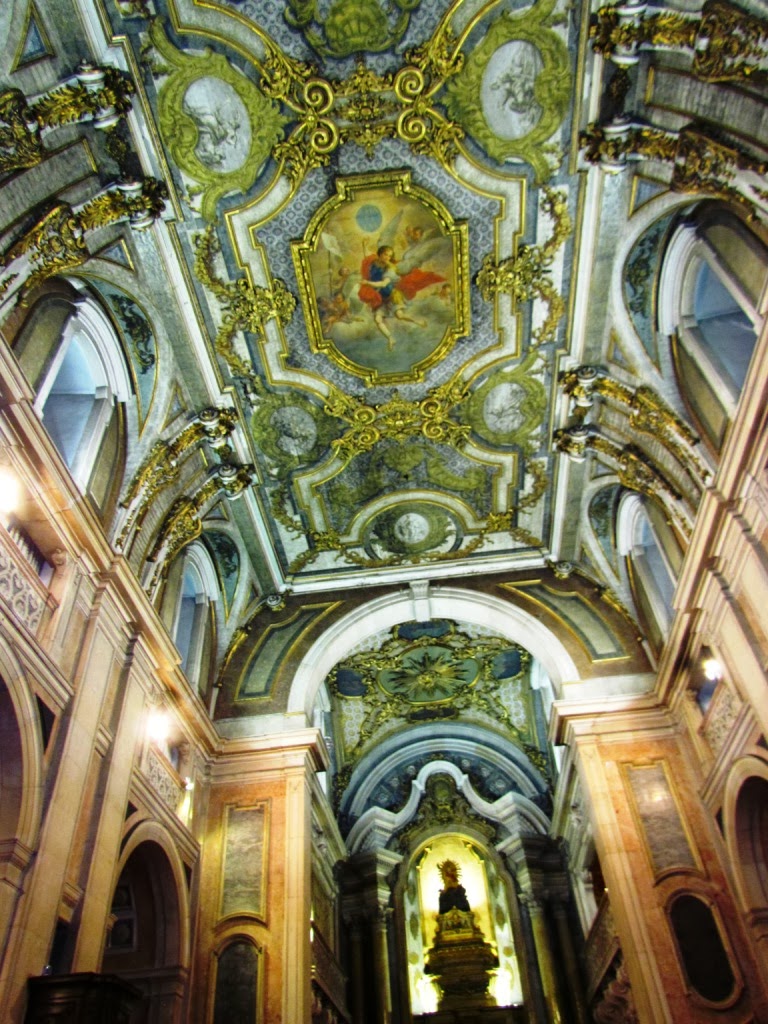How to arrive
Get off on Rua das Janelas Verdes - Bus 713, 714, 727
Get off on Avenida 24 de Julho - Bus 728, 732, 760 or Trams 15E, 18E
Get off on Largo de Santos - Tram 25E
Get off on Largo de Santos - Tram 25E
BY DECISION OF THE DGPC (GENERAL DIRECTORATE OF CULTURAL HERITAGE), THE MUSEUM WILL BE CLOSED IN JUNE 13, LISBON MUNICIPAL HOLIDAY !!!|!|!!|!|
 |
| The tram 15 - pickpockets - (Praça da Figueira-Belém-Algés) and the museum |
The permanent exhibition of the NMAA is installed in 70 rooms spread over three floors of the museum building which consists of the Alvor-Pombal Palace, the original building, and Annex, as traditionally assigned to the built-in 40 years of the twentieth century.
The first floor houses the collections of European painting and decorative arts in Europe, the area corresponding to the palace, the chapel of Albertas collection of furniture and Portuguese, in the area corresponding to the Annex.
On the second floor are exposed collections of Portuguese Gold (which includes some parts Indo-Portuguese and European), Portuguese Jewellery, Ceramics (includes the extensive Portuguese faience core and a small core of Portuguese porcelain, the vast core of Chinese porcelain, Islamic faience, and some specimens of porcelain from Japan), Glass and Portuguese Oriental Arts (part of the productions African-Portuguese, Indo-Portuguese and Sino-Portuguese Namban art).
On the third floor is exposed to Portuguese Portuguese painting and sculpture.
On the building, the display area of floors 2:03 located in the designated Annex.

The first floor houses the collections of European painting and decorative arts in Europe, the area corresponding to the palace, the chapel of Albertas collection of furniture and Portuguese, in the area corresponding to the Annex.
On the second floor are exposed collections of Portuguese Gold (which includes some parts Indo-Portuguese and European), Portuguese Jewellery, Ceramics (includes the extensive Portuguese faience core and a small core of Portuguese porcelain, the vast core of Chinese porcelain, Islamic faience, and some specimens of porcelain from Japan), Glass and Portuguese Oriental Arts (part of the productions African-Portuguese, Indo-Portuguese and Sino-Portuguese Namban art).
On the third floor is exposed to Portuguese Portuguese painting and sculpture.
On the building, the display area of floors 2:03 located in the designated Annex.

AMAZING MUSEUM AND GARDENS....
NEXT FOTO : PAINEIS DE SÃO VICENTE ( NUNO GONÇAVES ) - NO WORDS
Found during the late 1880s in the monastery of Saint Vicente de Fora in Lisbon, they depict Saint Vincent of Saragossa. This polyptych consists of six separate panels of oak, painted with oil or tempera.
The only reference that art historians can use to support the attribution of the painter of the Saint Vincent Panels was written in the 16th century by Francisco de Holanda. The reference mentions a great work of art made by the painter that is inferred to be these panels. It also is speculated that the father of Hugo van der Goes collaborated in the painting of the panels, but no concrete proof exists regarding that supposition.
The skill of the painter of the Saint Vincent Panels is regarded as the highest peak of Portuguese antique art.
CUSTODIA DE BELÉM:
The glazes are plentiful and are one of the elements that convey a special beauty to the Custodia de Belém. The application of enamels in ronde - bosse, in images, is a rare virtuosity, only observable in the best examples of this art.
FACADE AND GARDENS
At the top of the museum are visible reproductions of the famous
picture attributed to Nuno Gonçalves and known as "panels of St. Vincent."
In part of the museum facing the Tagus River are a
pleasant garden and a small restaurant and coffee bar
NEARBY THE MUSEUM

A - CHAFARIZ DA ESPERANÇA ( 1752 )
.
B - CHURCH OF "SANTOS-O-VELHO"
C -CHAFARIZ DAS JANELAS VERDES
At a square beside the museum, a monumental fountain (eighteenth century)
D - "CRUZ VERMELHA" BUILDING
Building the Portuguese Red Cross, to the northern exit of the museum.
Beautiful tile panels(****)
Ask at the entrance, permission to take pictures.
Ask at the entrance, permission to take pictures.
E - CHURCH OF " SÃO FRANCISCO DE PAULA "
This beautiful baroque church Basilica built by Queen, wife of King Joseph I, daughter of the King of Spain, Philip V, is situated in an elevated position. At the time of its construction, had not been built the river embankment. Thus, when the caravels entered the Tagus river, the monumental facade of the Church was seen by sailors returning to Lisbon. Was magnifies your vision. Today is-blocked by buildings constructed at the landfill.
The tomb of Queen Mariana Victoria, wife of D. Joseph I, is integrated in the open arcosolium on the West wall of the chancel of the church of San Francisco de Paula, since 1781, when the queen was buried there. Classified as a National Monument, this funerary monument, the work of Machado de Castro workshop reflects a bulging chest, black marble, resting on two lying lions, made in white marble and topped by three windings with fins, on which are seated two little angels wide garments, also in white marble, which flank one bracket, bearing a royal crown to the center. In front of the ark shows up a card in bronze, trimmed with rocaille decoration, whose epitaph Queen carries the following caption: ' D. M. / D. MARIANNA VICTORIA CATHOLICORUM REGUM FILIA, / PORTUGALLIAE REGINA FIDELISSIMA. JOSEPH I. FIDELISSIMI REGIS CONJUX; / CUI SUPERVIXIT ANNOS CIRCHER QUATUOR; DIEM CLAUSIT EXTREMUM / XVIII. KAL. FEBRUARY ANNI MDCCLXXXI AETATIS SUAE ANNO LXIII. / EJUS CORPUS IN HOC TEMPLO. ipsius EXPENSES, ET PIETATE FUNDATO, / HIC DEPONI FECIT FILIA SUA D. MARIA I. REGINA FIDELISSIMA. / ANIMAM VERO, CHRISTIANS VIRTUTIBUS ORNATAM, / PIE CREDITUR CUM CHRISTO REGINARE IN COELO; / ET IN PACE DOMINI REQUIESCERE. AMEN.'.
MARIANA VICTORIA OF SPAIN, QUEEN OF PORTUGAL

Background
Mariana Victoria was born at the Royal Alcazar of Madrid in Madrid and was given the same forenames as her paternal grandmother Maria Anna Victoria of Bavaria, wife of Le Grand Dauphin. She was an Infanta of Spain by birth and the eldest daughter of Philip V of Spain and his second wife Elisabeth Farnese. Her father was a grandson of Louis XIV and had inherited the Spanish throne in 1700. At the time of her birth, Mariana Victoria was fifth in line to the throne of Spain behind her half brothers Infante Louis, Prince of Asturias, Infante Ferdinand, Infante Pedro as well as her full brother Infante Charles. As an Infanta of Spain, she had the style of Royal Highness.
Engagement to Louis XV
Louis XV and Mariana Victoria double portrait by Alexis Simon Belle
After the War of the Quadruple Alliance, France and Spain decided to reconcile by engaging the Infanta Mariana Victoria to her first cousin the young Louis XV of France. Organized by Philippe d'Orléans, Regent of France for the ten-year-old Louis XV, the match was part of a wider set of engagements which included the proposal of Philip V's eldest son Infante Louis, Prince of Asturias to Élisabeth d'Orléans, Mademoiselle de Montpensier followed by another proposal between Philippine Élisabeth d'Orléans, Mademoiselle de Beaujolais to the young Infante Charles.
Mariana Victoria, c. 1726
Saint-Simon, the French ambassador, requested her hand on 25 November 1721. The exchange of the young Infanta and Mademoiselle de Montpensier was on the Île des Faisans ("Isle of Pheasants") and was the site was where their common ancestors, Louis XIV and Maria Theresa of Spain had met in 1660. Mariana Victoria arrived in Paris on 2 March 1721 amongst much celebration and took up residence at the Palais du Louvre. The young Infanta was nicknamed the L'Enfant Reine ("Queen-Infanta") as the couple was not to be married till Mariana Victoria reached a more mature age. Mariana Victoria was in awe of Louis XV and was popular with the court apart from the king himself who avoided her presence.[5]
According to the mother of the Régent, Elizabeth Charlotte of the Palatinate, Mariana Victoria was the "sweetest and prettiest little thing" and had considerable wit for her age. Her education was placed in the care of Marie Anne de Bourbon, an illegitimate daughter of Louis XIV and Louise de La Vallière. In February 1723, Louis XV reached his majority and thus governed the country by his own accord.
Her establishment in France was not to be. Under the influence of Prime Minister Louis Henri, Duke of Bourbon, and his mistress Madame de Prie, the decision was made to send the seven-year-old Mariana Victoria back to Spain on 11 March 1725. Bourbon had wanted to maintain influence over the young Louis XV and offered his sister Henriette Louise de Bourbon as a potential wife who, unlike Mariana Victoria, was old enough to conceive. The situation was not helped by the Spanish rejection of Louise Élisabeth d'Orléans whose husband died having ruled as Louis I of Spain for only seven months. As their marriage had not been consummated, the Spanish refused to support her and ordered the return to France with her sister Philippine Élisabeth. Mariana Victoria left Versailles on 5 April 1725 and traveled to the frontier where she and the two Orléans daughters were then exchanged. Louis XV subsequently married Marie Leszczyńska in September 1725 and Mariana Victoria's sister the Infanta Maria Teresa Rafaela married Louis XV's son in 1745 to reassure the insulted Spanish court.
Engagement to Joseph I
Mariana Victoria, Princess of Brazil.
Her arrival in Spain was taken as a great insult and caused a diplomatic rift between Spain and France. The offended Spanish soon after concluded a treaty with Austria in the form of the 1725 Treaty of Vienna, whilst England sought support from France. Having remained unmarried, she was still eligible to inherit the throne but was displaced by her younger brother Infante Philip who was born in 1720. Discussions with the Kingdom of Portugal began in 1727 and a marriage was negotiated by the Portuguese ambassador the Marquis of Abrantes. She was a rumored bride for Emperor Peter II of Russia, grandson of Peter the Great. Another double marriage was planned. Mariana Victoria would marry the Infante José, "Prince of Brazil", son and heir of João V of Portugal. Her older half brother Ferdinand, "Prince of Asturias" would marry José's sister the Infanta Bárbara. Mariana Victoria married the Prince of Brazil (traditional title for the Portuguese heir to the throne) on 19 January 1729 Elvas in Portugal. The Prince of Asturias (traditional title for the Spanish heir to the throne) married the Infanta Bárbara the next day at Badajoz. From her marriage till the time of her husband's accession to the throne in 1750, she has styled Her Royal Highness the Princess of Brazil.
The husband and wife would soon have a close relationship. The couple enjoyed hunting as well as music – Mariana Victoria was an accomplished singer – patronized Italian opera singers and the theatre but were both passionately religious. Despite this, her husband maintained various mistresses much to the dislike of his strong-willed wife. During her marriage, Mariana Victoria gave birth to eight children, four of whom survived infancy. Her first child infant Maria was given the style Princess of Beira as the heir apparent to her father. Two of Mariana Victoria's daughters remained unmarried. Her daughter Infanta Mariana Francisca was a proposed bride for the Dauphin of France, son of Louis XV but Mariana Victoria herself rejected the plan. When her other daughter Infanta Doroteia was proposed as a wife for the future Philippe Égalité Mariana Victoria again refused the match. Her youngest daughter Infanta Benedita married José, Prince of Brazil, Mariana Victoria's grandson. The latter marriage was organized by Mariana Victoria herself after the death of her husband.
Queen, regent, and widow
At the death of her father-in-law, King John V in 1750, her husband became the ruler of the Portuguese Empire which had significant territories in South America. Her husbands reign was dominated by the influence of the Marquis of Pombal who had was a favorite of the Queen mother. Joseph, I soon left the governing of the state to Pombal who used his power to remove the influence of the church at the court as well as that of his enemies. Mariana Victoria and her daughter disliked the influence Pombal had over Joseph I. Her husband's reign was marred by the devastating 1755 Lisbon earthquake of 1 November 1755 which killed 100,000. The earthquake caused Joseph I to develop a severe case of claustrophobia and he was never again comfortable living within a walled building. Consequently, he moved the royal court to an extensive complex of tents in the hills of Ajuda. It was Pombal who organized the reconstruction of Lisbon in the aftermath of the earthquake.
In 1759, the Távora affair emerged after an assassination attempt on her husband failed and the powerful Távora family were, in the eyes of Pombal, completely responsible for the attack. Pombal later ordered the execution of all members of the noble family and it was only at the intervention of Mariana Victoria and her daughter, the Princess of Brazil that some women and children were spared. As Pombal was de facto ruler of the state, Mariana Victoria and her husband took a less prominent role in politics.
Her husband, having suffered from a series of strokes decided to allow his wife to take his place as head of government. As such, Mariana Victoria was created Regent of Portugal in her husbands name. Created Regent on 29 November 1776, she remained so till her husbands death on 24 February 1777. Upon her husband's death, their eldest daughter became the first queen regnant as Maria I. Throughout her daughter's reign she used to exert much influence on her daughter who would often ask her mothers for advice on most matters of state. In the early days of Maria I's reign, Pombal was exiled to the country.
When her daughter had assumed government, Mariana Victoria took it upon herself to improve relations with her native Spain which was ruled by her older brother Carlos III. The two countries had been in conflict regarding territorial possessions in the Americas. Leaving Portugal on 28 October 1777, Mariana Victoria traveled to Spain where she stayed for just over a year, residing both in Madrid and at Aranjuez. Mariana Victoria helped bring about a treaty between the two nations which was to be cemented by a double marriage between her grandchildren. These unions were between Charles III's son Infante Gabriel and Mariana Victoria's granddaughter the Infanta Mariana Vitória. The second marriage was between Infanta Carlota, the eldest granddaughter of Carlos III Infante João. While in Spain Mariana Victoria had had an attack of Rheumatism and was confined to a wheelchair for some time in August 1778. She returned to Portugal in November 1778. Her illness was furthered when it became clear that she was suffering from Heart disease as well. The elderly Mariana Victoria died at the Real Barraca de Ajuda, a building which is where the present Ajuda National Palace is. She was buried at the Church of Saint Francis of Paola in Lisbon.
TIP:
Down the stairs, located between the main entrance of the museum and the building of the Red Cross (Jardim 9 de Abril), cross the Avenida 24 de Julho, and will find a tram 15 stop. You can take the tram and go to Belérm or Lisbon (Praça da Figueira). Be wary of pickpockets, young Rom women, disguised as tourists, with sunglasses and tourist maps in their hands. Beware of other pickpockets, groups of two or more people, men, and women.
ANOTHER MORE INTERESTING TIP:
Cross the railway line, and walk along the river Tagus to the Torre de Belém (3.5 Kms) or to the downtown of Lisbon (3.5 km). THE COURSE, WALKING ALONG THE RIVER, IS VERY NICE, 



+-+1+-+C%C3%93PIA+-+C%C3%B3pia+-+C%C3%B3pia+-+C%C3%B3pia+(2).jpg)

.jpg)
.jpg)





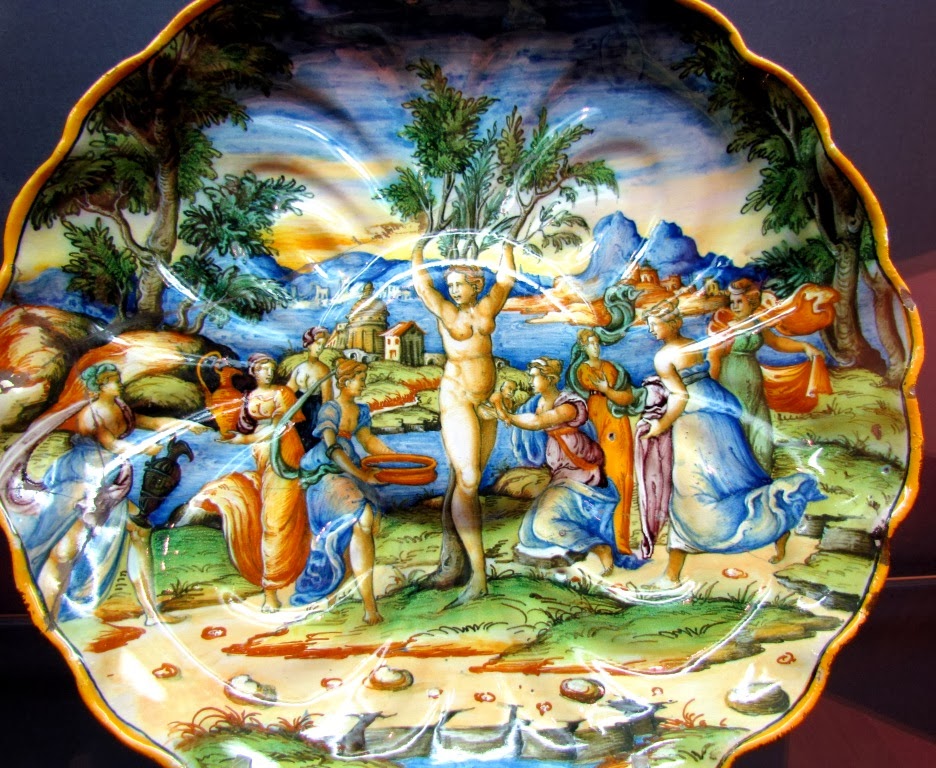



























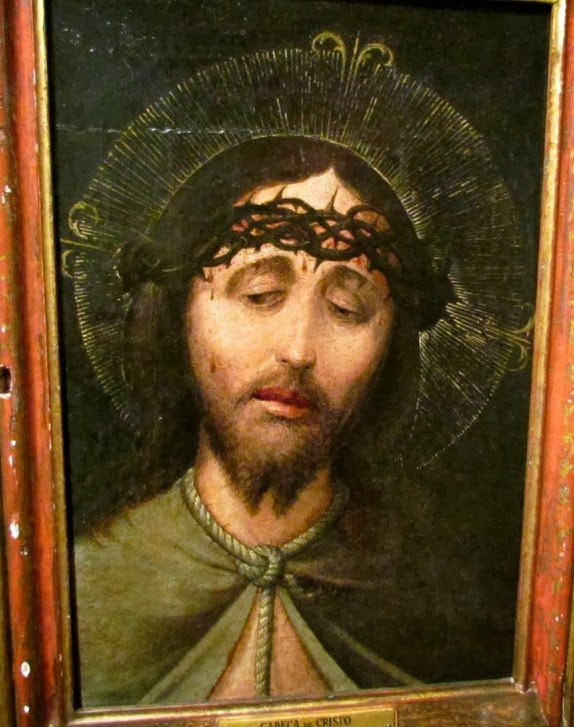

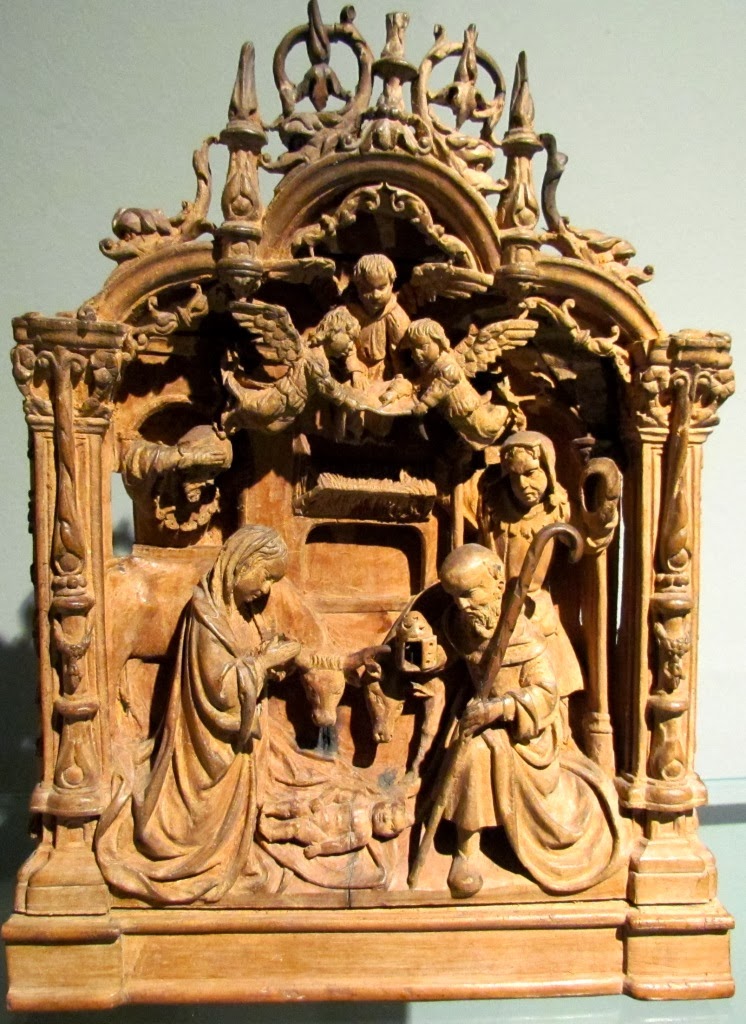


































































































































































































































































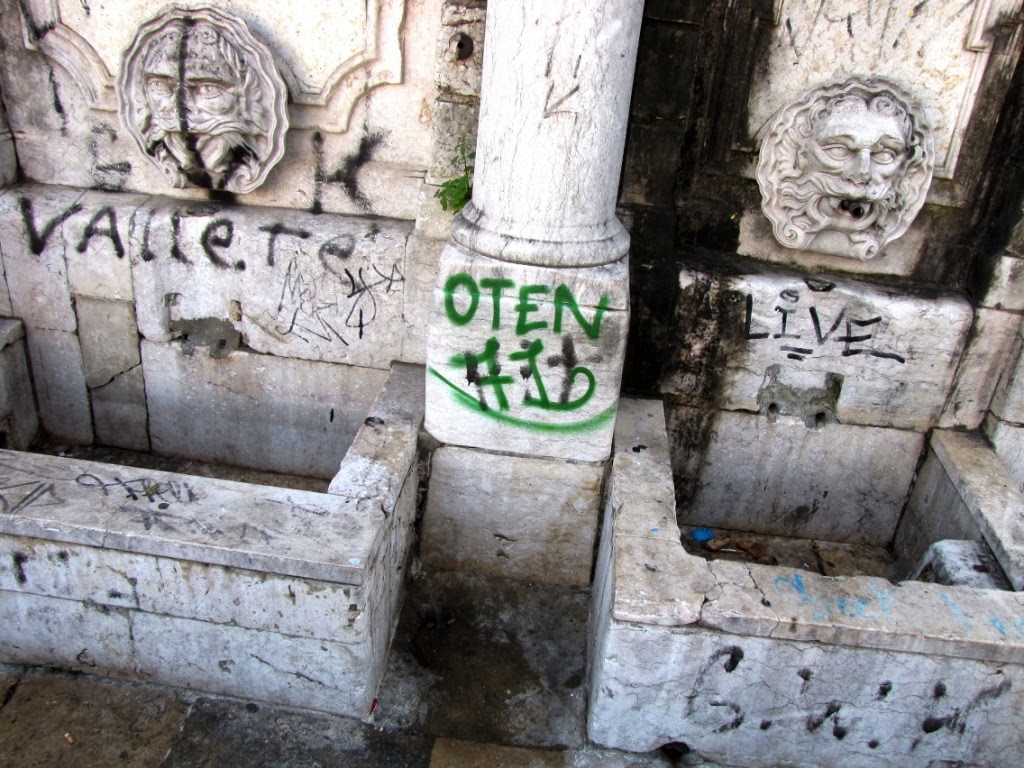













































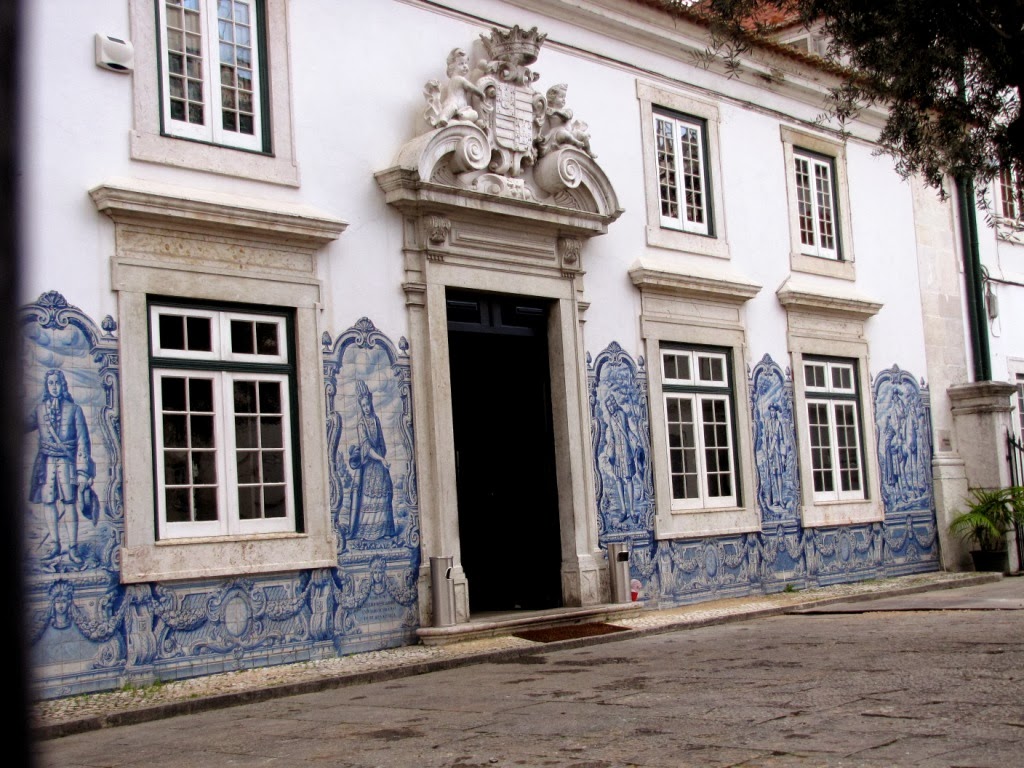
.JPG)
.JPG)
























.JPG)
.jpg)









